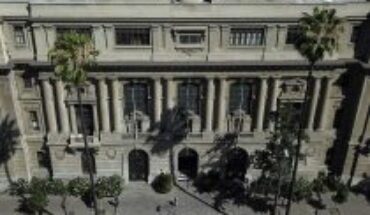fit note that pl Antas selected for the study have a peculiarity in its roots, said Dr. Alejandra Zúñiga Feest, researcher of the Institute of environmental and evolutionary Sciences of the Universidad Austral de Chile (UACh).
“They have roots proteoideas or cluster roots, which are dense clusters of short, densely spaced favouring the absorption of nutrients, and roots which exude compounds that solubilize nutrients (carboxylate)”, said the professional, who It is also academic of the doctoral program in Sciences, mention in ecology and evolution of the same House of studies.
Dr. Zúñiga, the principal investigator of this research, which will have a duration of four years, seeks to study the associations of species colonizing mainly the Proteaceae family with neighboring plants, which would in this case be notro, Radal, and dwarf radal.
The researcher has that not yet has studied what happens beneath the surface of these species of plants colonizing.
“In this project we will study what mechanisms are occurring in successions vegetations on ground, adjacent to roots, especially on slopes of volcanoes, comparing them with the land where there are no plants”, he stressed.
According to the scientist, the plants “have great influence on the structure of the soil on the microorganisms in the rhizosphere and finally, to the long term, on the development of ecosystems”.
Early stages of the project Zúñiga explained that the project began recently and the first step is the production of seedlings of these species.
“With these experiments will be carried out the next few years”, told the researcher.
He also explained that several approaches, will be used as the study field and work in large pots, which are referred to as “Mesocosms”, where the single plants and others will be installed with neighbouring plants.
The field work will take place on the slopes of two volcanoes: the Antuco, located in the region of bio bio, whose height is of 2.979 metres and its last eruption was in 1869, and the Mocho-Choshuenco volcano, which rises 2,422 meters in the Los Ríos region and its eruption was in 18 64, both in the South of Chile.
Volcanic substrate of the last eruption of Calbuco volcano, deposited in the sector of Ensenada, in the South of Chile will be used for work in the mesocosm.
The main study will know in depth what the interaction of plants and microorganisms of the soil which are generated on the recent volcanic ash, said Zuniga.
Roots and rhizosphere “must know how are these associations that can facilitate the life of plants and how to change the soil microbes that are associated with the roots, in the area called rhizosphere through time”, explained.
“Mostly that deepen in this study,” said scientist.
The rhizosphere is the part of the ground immediately to the living roots and which is under the direct influence of these.
The rhizosphere fungi form interactions in symbiosis with the roots of plants that favour nutrient intake, Frost tolerance and protection against pathogens.
They are known as mycorrhiza and are physical networks that allow the movement of nutrients between fungi and plants, and even among plants through mycelia.
The latter are a set of hyphae that form the vegetative part of a fungus. The majority of fungi vegetative bodies are composed of multicellular filaments called hyphae (a network of cylindrical filaments that make up the structure of the body of multicellular fungi).
According to Dr. Zúñiga, the research will provide information relevant to the restoration with native species.
“This knowledge will be especially relevant in areas where there is damage in vegetation caused by volcanic eruptions and who are in areas vulnerable to erosion, as it is the case of the slopes of the mountains of the Andes in the South of South America,” concluded the Chilean scientist.
translated from Spanish: Scientific studies Chilean native plants to restore volcanic soils
January 30, 2019 |




